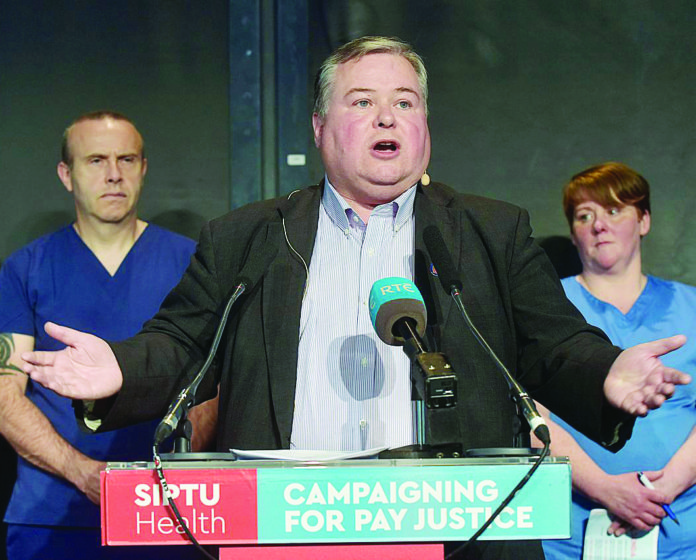
AN ambulance crew had to drive almost 1,000 kilometres in one shift to transport a single patient because ambulances are being held up for hours at packed emergency departments.
And before the chaos of Monday struck, with the highest number of patients on trolleys since records began, SIPTU representatives had warned that the overcrowding crisis in emergency departments was causing chaos for ambulance professionals across the country.
SIPTU Health Division Organiser Paul Bell outlined how last weekend, one crew from Clare on a 12 hour shift were dispatched on a 901km roundtrip to Clonmel and back to Youghal due to local resources being held up in Tipperary, while ambulances from Kilkenny bases were dispatched to emergencies in Cork.
Crews based in Limerick have long protested that they are being held up in the emergency department at University Hospital Limerick (UHL) waiting to hand over patients.
“SIPTU representatives are demanding that Health Minister Simon Harris, his Department officials and the Health Service Executive (HSE) take immediate and effective action to relieve the immense pressure being experienced by ambulance professionals across the country,” Mr Bell said.
“At the end of November, SIPTU representatives requested that the HSE and Department of Health agree a protocol for the handover of patients at emergency departments. Unfortunately, our calls were ignored and now we have an unacceptable situation where our members are reporting delays in some cases of between three and a half and seven hours outside emergency departments.
“It is outrageous that in 2020 Ireland patients are being treated in the loading bays of hospitals instead of hospital beds. This is not what quality patient care looks like.”
He said that while the HSE and Department of Health are responding to some areas of the overcrowding crisis by increasing the number of beds available in hospitals “there seems to be little planning to ensure ambulances are kept on the road and readily available for communities.”


